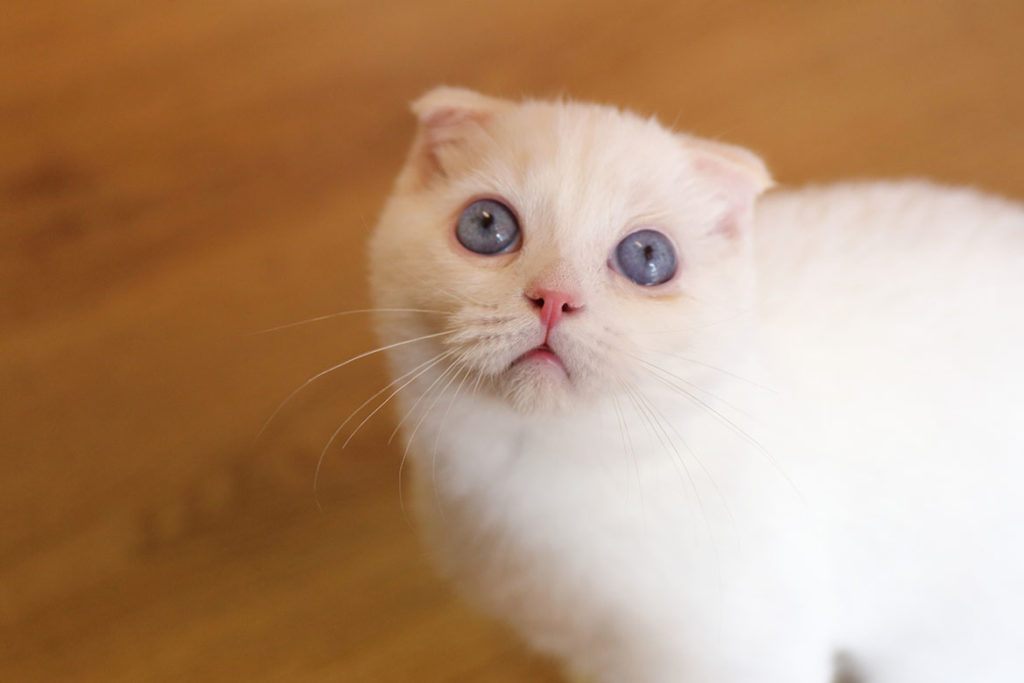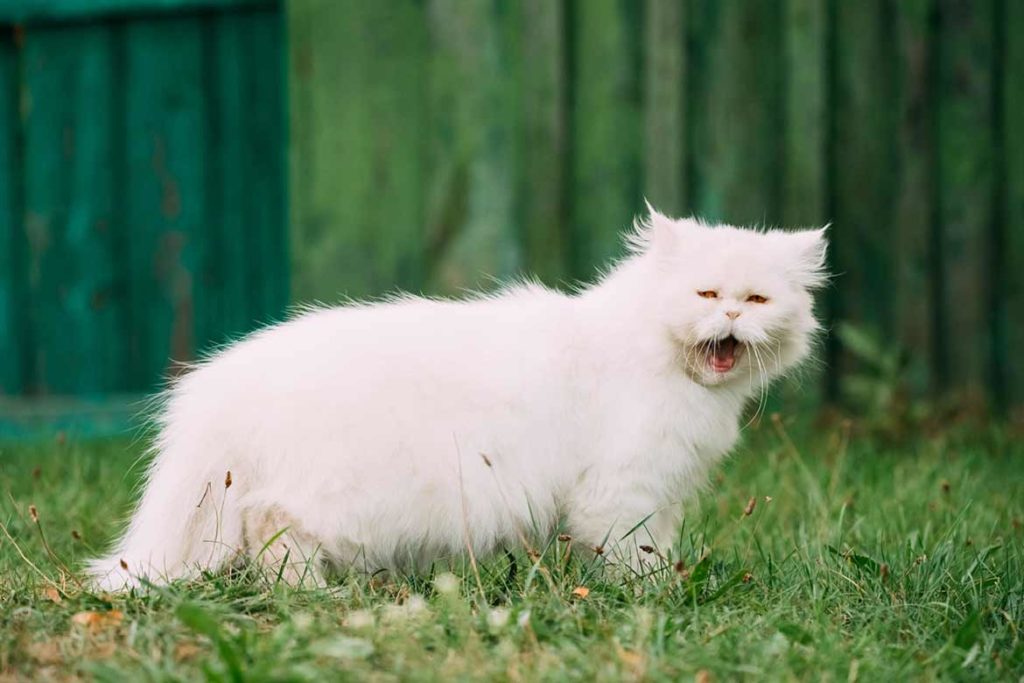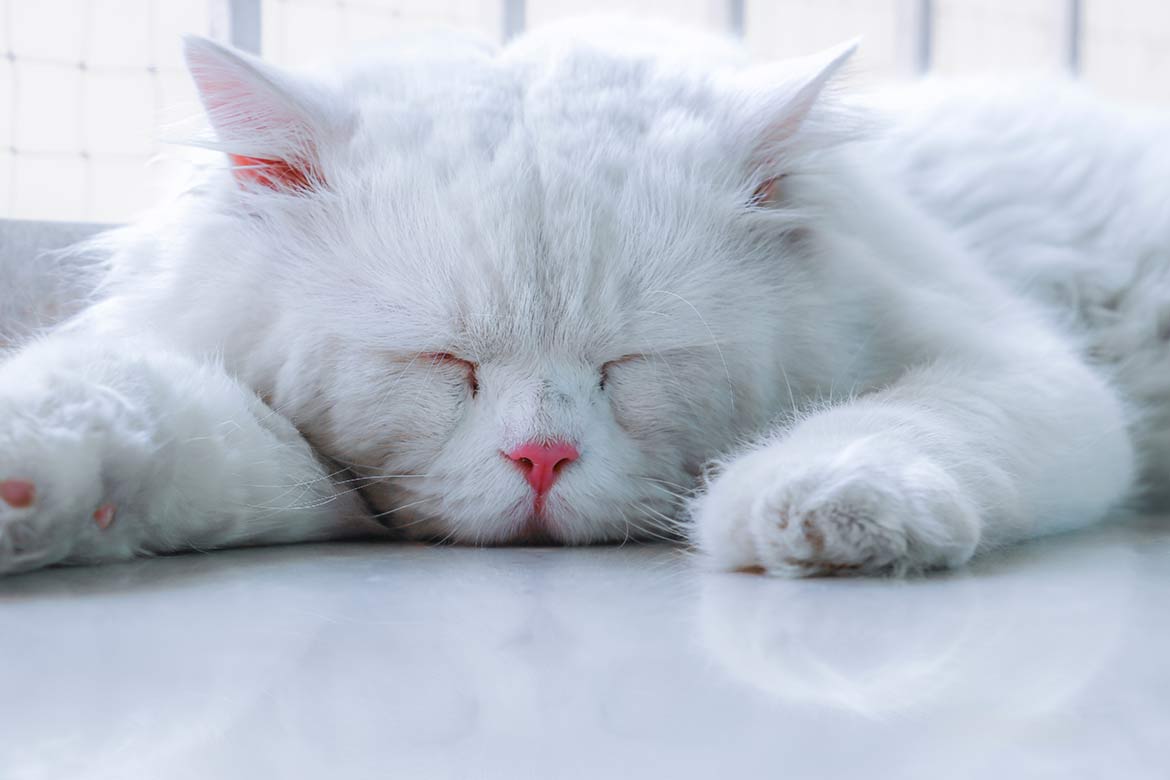The famous fluffy Persian catsare known for their long coats and friendly temperament; albeit, Persian cats tend to limit their affections to humans, they are close.Compared to other purebred cats, these cats are admired for their magnificent looks and calm behaviour. Persian cats are of two types, show type and traditional type. The show type breed has a round head enhanced with a thick ruff, small ears, a flat nose, big round copper eyes, a broad, short body with heavy boning atop short tree-trunk legs, and a thick, flowing plume of a tail. Whereas, the traditional type or also known as Doll face, does not have the extreme features of the show Persian, and has normal length nose. But they both share a long, glamorous coat that comes in many colours and patterns, and both have same joyful nature.
Also known as the Persian Longhair in the English-speaking countries,their Cuddly and lapping nature traits coupled with undemanding personality, made this breed quite popular among cat lover. Persian cats are among the most preferred pet breeds around the world. In 2021, it was ranked as the fourth most popular cat breed in the world according to the Cat Fanciers’ Association. If you too are looking for information on this breed, then you are at right place. In this article, we will discuss some interesting facts about these cats and know more about various things that you need to know before petting this cat.
Origin or History of Persian cats:
The history of Persian cats’ is not very clear, as their presence between humans has been known since the 1600s. However, if we talk about their origin, these cats are thought to have originated from Persia, which in modern times is present day Iran.
The cat was later brought to Europe by the European explorers in the 17th century. The first documented ancestors of the Persian were imported from Khorasan, Persia, into Italy in 1620 by Pietro della Valle. From France, they soon reached Britain. Over the time, these cats became popular among royals, including Queen Victoria of England. A few times, the cats also made the appearance of big screens. Through selective breeding, cat fanciers began to mold the Persian to its present-day appearance. They bred cats to have a round head, short face, snub nose, chubby cheeks, small, rounded ears, big eyes, and a sturdy body.
Traits:
Persians are a medium built cat with massive and heavy bones, which makes them look bulkier than they actually are. Their average weight ranges between 7 to 12 pounds. Talking about their length, Persian cats measure between 14 and 18 inches.

Also read: 7 Ways To Make Your Home Decor More Pet- Friendly
These cats are known for their long coats, which generally come in various colours like white, black, cream, shaded, doll face and smoky paint, silver and cold shaded, Himalayan, bi-color, tabby, and calico.
Another decisive factor for choosing a pet is its life span. The life of aPersian ranges between10 and 17 years.
Physical traits of Persian cats include a round head, stubby nose, rounded earsand short bodies.
These cats are generally regarded as a quiet cat. Typically placid in nature canadapt well to a apartment life. Such nature of this cat make it an ideal pet.
Persian cat considered to be calm not aggressive but every cat, dog or pet can bite. They consider biting as playing sometimes. Moreover, Persian cats are very good with the kids and elderly people because of their calm nature.While they are affectionate and enjoy attention, they’re not usually the type to demand constant attention. In fact, they can be standoffish and reserved around new people until they get to know them.
How to care?
As you know that they have long furs, so they obviously need a fair amount of regular grooming. Complacency in following regular grooming care will leave their coats tangled and matted. It is advisable that their hair should be brushed once a day. Besides, these should be bathed every month to maintain the shine and softness of their coats. Another problem associated with longcoats is dandruff, having long hairs these cats become vulnerable to dandruff. You can use prescribed anti-dandruff solutions or also may try some home remedies.
Moreover, their eyes should be wiped daily to prevent stains from excess tears and deposition of crust.
If we talk about dental hygiene,these cats need good dental care; owner must brush their teeth weekly or monthly. Besides, schedule an annual dental cleaning at veterinarian’s clinic. Unhealthy teeth and gums can lead to big problems, like infections that can affect the heart. Their nails should be trimmed regularly.
Considering all this, these cats are considered high maintenance cats. These cats are not energetic or playful cats; instead, they prefer to find a spot to relax. They are also slow learners and are not considered as easily trainable cats.
Persian cats are more indoor-only cats and it is advisable to keep them indoors. These cats are not scrapper and would fare poorly against other cats, dogs, coyotes and the other dangers that face cats who go outdoors. Nor is their coat conducive for shedding dirt, leaves and stickers. Letting a Persian outdoors just means that much more time spent grooming the cat.

Also read: Man Loses Daughter’s Pet Hamster, She Posts Screenshots Of Their Chat
Associated health problems:
Similar to other purebreds, Persian cats are also vulnerable to several health issues preserved by selective breeding movements. Favoured by fanciers, this head structure can bring with it a number of health problems. Albeit, they are also present with genital health problems unrelated to their facial features. Here are some common health issues found in these cats:
- Most common hereditary health issue in these cats is Polycystic kidney disease, affecting one or both the kidneys. They usually starts showing symptoms when they are 7 to 10 years old.
- Having large rounded skull and shortened face and nose make Persians prone to difficulty in breathing and susceptible to respiratory diseases caused by their snob’s noses.
- Persian cats are also susceptible to certain eye conditions, like Epiphora. In this condition, overflow of tears happen onto face.
- The inward folding of the eyelids or Entropion is common among Persians. In this, the eyelashes rub against the cornea, and can lead to tearing, pain, infection and cornea damage.
- Dystocia, an abnormal obstructed labour, is also quite common in Persian cats.
- Besides, these cats are very heat sensitive and prone to Bladder stones and infections.
- Various kinds of worms and bugs can invade cats’ body. Everything from fleas and ticks to ear mites can infest her skin and ears. Hookworms, roundworms, heart worms, and whip worms can get into her system in a number of ways like drinking unclean water, walking on contaminated soil, or being bitten by an infected mosquito.
What to feed?
When it comes to food, these cats are infamous for their picky nature. However, before owing Persian you must understand that their food must contain high protein and fiber with low amounts of fat. We have already discussed that these cats are not very active or energetic, so feeding them excess food will lead to weight gain and obesity. The feeding schedule should be Strict and there should be proper gap between two mealtimes rather than keeping the food in front of them all time. Having different face structure, these cats sometimes find it difficult to eat specific shapes and sizes, so you must take care of apposite and size of the food.
Cost of these cats in India:
If you want to own a Persian Cat in India the price varies from 15,000 to 40,000 Rupees in cities like Delhi, Bangalore, Mumbai, Pune and Chennai. However, you may find it cheaper in other cities of India. Moreover, you can easily find Persian cat breeders across India and you can also adopt Persian cat from Adoption centres.
So, should you bring this cat home?
Depends; This breed is the best choice for those who want to pet a royal cat breed and are ready for its high maintenance. They need a lot of grooming because of their long coats, prone to shedding. However, Persians are not very friendly with other pets. And discussed above, these cats are also very lethargic and not very intelligent. So before bringing one your home, you need to think whether this cat aptly fits in your needs and with your family.
